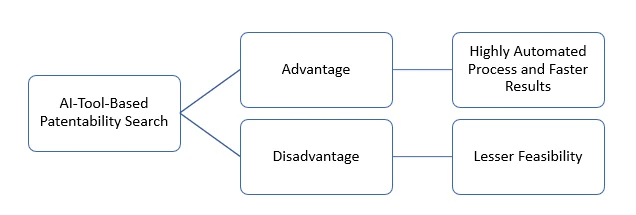AI vs. Manual Patentability Search: What’s the Best Approach?
When seeking patent protection for any invention, it’s crucial to conduct an exhaustive patentability search. This is the first critical step for innovators and patent attorneys to assess whether the invention meets the required patentability criteria. The process involves reviewing vast amounts of patent and non-patent literature to identify prior art that could impact the patentability of the invention.
However, performing a thorough patentability search can be time-consuming and resource-intensive, leading decision-makers to choose between manual searches or artificial intelligence (AI)-based tools, depending on their goals. This article explores the pros and cons of both methods and suggests an optimal approach to minimize potential setbacks during patent prosecution or examination.
Table of Contents
The Increasing Complexity of Patentability Searches
The number of patent applications has skyrocketed in recent years. According to the World Intellectual Property Organization (WIPO), global patent applications reached 3.3 million in 2018, a 5.2% rise from the previous year. The complexity of inventions has also grown, with advancements in artificial intelligence, biotechnology, and telecommunications leading the way.
This surge in applications and technological complexity means patentability searches now require significantly more resources, time, and precision. A typical search might involve reviewing thousands of patents, research papers, and other relevant non-patent literature. Missing just one crucial prior art reference could result in a rejected patent application.
To address this, innovators and organizations are increasingly turning to AI-based search tools. These tools promise to reduce search times from days to minutes by processing vast datasets automatically.
Manual Search – Pros and Cons

Advantage – Human Expertise and Insight
Manual patentability searches benefit from the expertise of experienced patent searchers. These professionals develop tailored strategies, identify relevant keywords, and meticulously analyze search results to identify prior art that could threaten the patentability of an invention. The human touch in these searches helps minimize the risk of missing critical prior art, providing a high degree of accuracy.
Disadvantage – Time and Resource Intensive
Manual searches, while thorough, require significant time and effort, particularly when screening large datasets. In fast-paced industries, such as consumer electronics or fashion, where innovation cycles are short, a delayed patentability search could hinder market entry.
AI-Based Patentability Search: Pros and Cons

Advantage – Speed and Automation
AI tools leverage deep learning, neural networks, and natural language processing to automate the patentability search process. These tools can analyze large volumes of data quickly and present relevant results in minutes. By automating the search process, AI can significantly reduce the time needed for an initial patentability assessment, allowing stakeholders to plan their next steps faster.
Disadvantage – Limited Precision
Despite the speed and convenience of AI-based searches, studies show that current AI tools lack the precision needed for a fully accurate search. Results from such tools vary in accuracy, with precision rates ranging between 30% and 50%. This means that out of the top 10 search results, only 3 to 5 documents might be truly relevant, making AI tools less reliable for highly technical or complex inventions.
The Role of Human Intervention in AI Patentability Searches
Many advanced AI patent search tools now offer options for human intervention, allowing users to refine search parameters. Users can input key aspects of an invention, select specific keywords, or define patent classifications to improve the accuracy of results. At Sagacious IP, we regularly evaluate AI tools for real-world efficiency and have found that AI tools work best when combined with human oversight.
For simpler inventions, AI tools can often capture relevant prior art with minimal human input. However, for more complex inventions, such as those involving intricate machinery or industrial processes, AI tools benefit from human intervention, such as selecting synonyms or manually inputting related patents.
Best Practices: Combining AI and Manual Searches
For an effective patentability search, a hybrid approach is recommended. AI patent search tools can be used for initial searches to quickly screen a broad dataset, while manual searches can then be conducted for a more in-depth review. This two-step process combines the speed of AI with the thoroughness of human expertise, ensuring accurate results while reducing overall costs and time.
At Sagacious IP, our patentability searches leverage a combination of advanced AI tools and skilled human reviewers to verify the novelty of inventions and identify patentable subject matter. This integrated approach ensures that businesses receive the best of both worlds—efficiency and accuracy.
Conclusion
As patent filings continue to increase worldwide, the demand for more efficient patentability searches grows. While AI tools offer speed and convenience, their limited accuracy makes them insufficient for conducting a comprehensive patentability search on their own. A hybrid approach—combining AI and manual expertise—provides the optimal solution for innovators looking to protect their inventions effectively and efficiently.
Sagacious IP patentability searches help businesses verify the novelty of their inventions. Our search draws on the power of AI tools, combined with the precision of manual expertise, to deliver the best results. With our integrated approach, organizations can ensure efficient and accurate patentability assessments, reducing the risk of setbacks during patent prosecution.
For inquiries or to learn more about our services, contact Sagacious IP today!
– Rohit Kumar, Nitin Sharma (Engineering Searching) and the Editorial Team
Having Queries? Contact Us Now!
"*" indicates required fields




